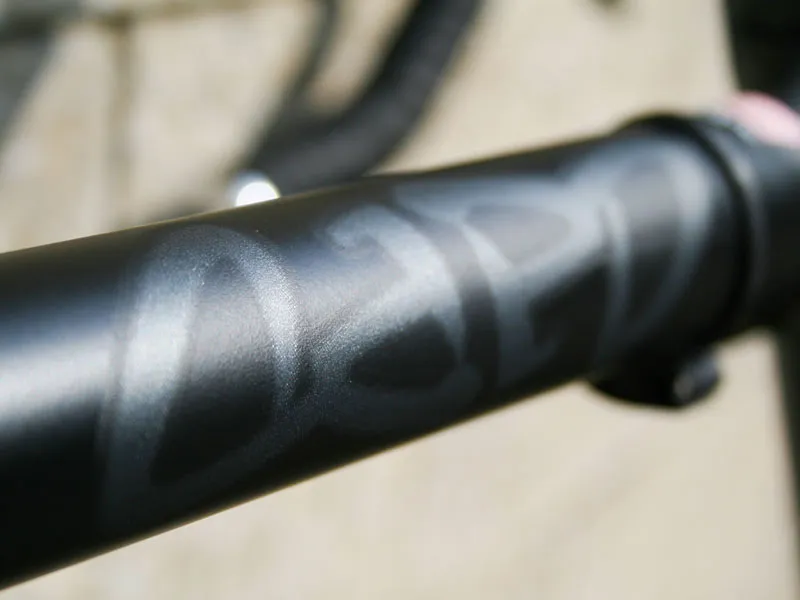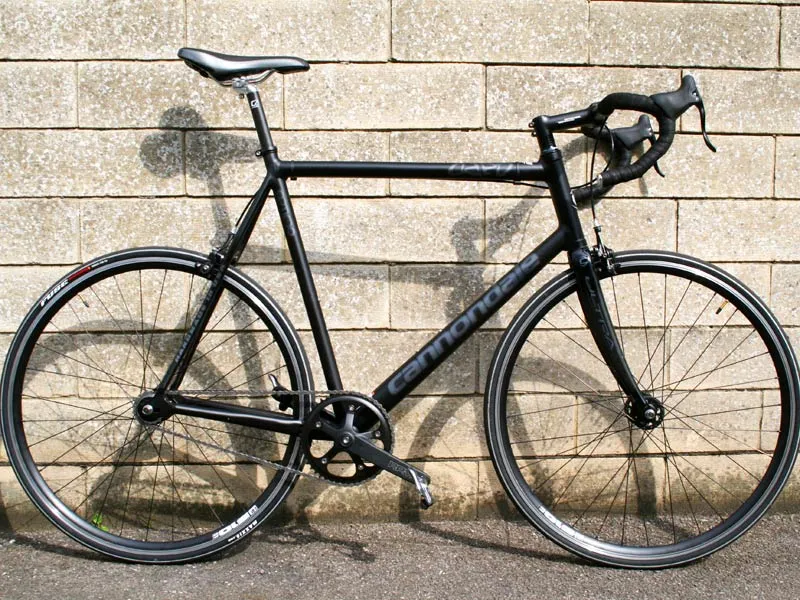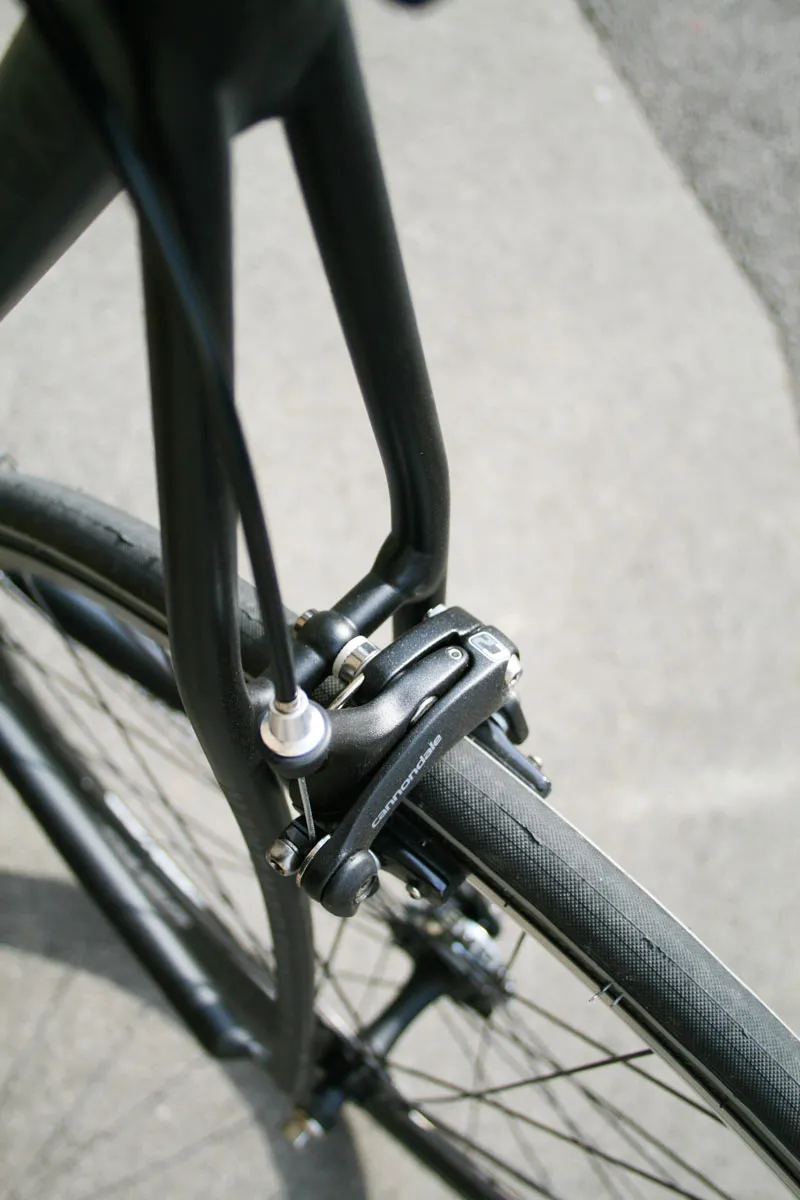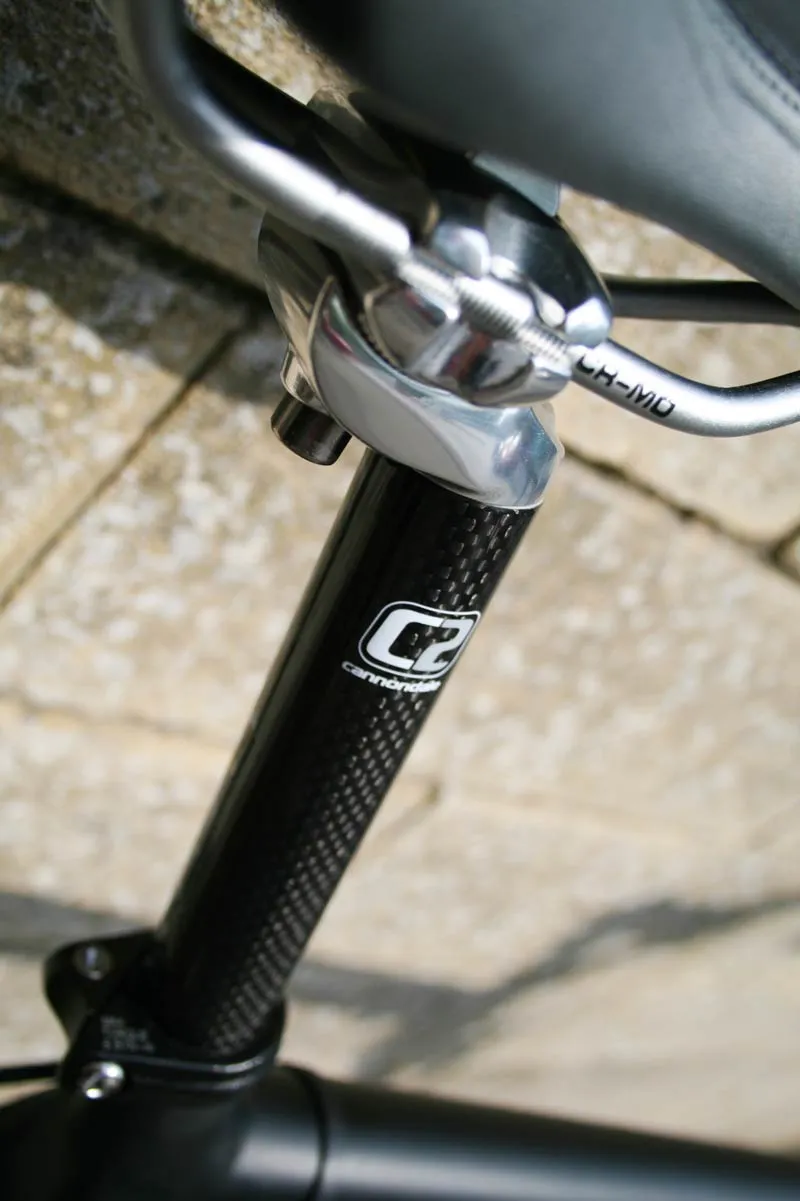Cannondale's Capo starts out as a freewheeling singlespeed, but gives you the choice of going fixed for the fully minimal urban experience.
The popularity of fixed-wheel road bikes has been on the up for some time. As much fashion statement as practical bike, the fixie has long been the choice of city centre courier, winter roadie trainer and those just wishing to ride something cool around town.
Purists still convert old bikes for fixed duties but major manufacturers have been quick to jump on the band wagon and to take advantage of the growing popularity of the niche. This is where the Capo comes in, Cannondale's answer to the street fixed-wheel road bike.
Frame and fork
Although the Capo isn't a true fixed-wheel bike - it comes with a freewheel on a flip-flop hub instead of a fixed sprocket - its horizontal dropouts, absence of cable stops and steep angles essentially make it a rider friendly track bike ready for road use. The presence of a freewheel also makes the Capo far more accessible, allowing anyone to jump aboard without tackling the learning curve of riding fixed.
A fixed is often seen as a second, third and even fourth choice bike so manufacturers are always going to equip them sensibly rather than sensationally. Cannondale have chosen an Optimo CAAD 5 alloy tubeset for the Capo. Even with the move to CAAD 9 and carbon frames the CAAD5 of the Capo is still a very high grade tubeset for such a bike. Good news because this gives you a responsive frame with loads of upgrade potential.
The skinny seatstays reduces the harshness that aluminium can cause and Cannondale's expertise in big tubed aluminium certainly goes a long way into refining the ride of the Capo.
Cannnodale have fitted the bike with a fork worthy of the frame. The carbon legged Slice Ultra complements the chassis - strong and direct without being too harsh. Track inspiration runs to the lack of cable stops resulting in the rear brake outer being zip-tied to the frame. Not the neatest of solutions and you need to add an extra tie to stop the housing rattling against the frame. A tidier solution, and one we'd recommend, would be to lose the rear brake all together. Swap the freewheel for a fixed sprocket and let the front brake and your legs take care of braking.
Equipment
As you'd expect from a bike built for practicality the equipment spec is never going to be electrifying. The CAAD5 frame is the high point; with componentry chosen to get the job done at a particular price rather than deliver a performance advantage. This means you get a lot of Cannondale branded kit. The best of which are the Cannondale dual pivot Theta brakes with accompanying TekTro levers. If you do decide to remove the rear brake, the front Theta has plenty of smooth, reliable power. The TekTro brake levers mimic the appearance and feel of Campagnolo's Ergo levers. The Capo branded cranks are pretty non-descript but at least you get a 48T alloy chainring instead of a heavy steel one.
The Velo made saddle is fine for town but too soft and unsupportive for big miles. Another sign of the cost savings is the faux carbon seatpost. Carbon effect wrap on an alloy seatpost isn't really called for on bike like the Capo.
Wheels
The 32 holed Mach1 510 rims on Formula track hubs are certainly built to take the pot holes. The wide Mach1 510 rims would look more at home on a mountain bike but at least they're robust. After the initial pinging of spokes the wheels settled down to business. By no means light thewheelset is far better suited to heavy town use than running up the training rides, as are the Hutchinson Top Speed foldable tyres. Designed for city use, the Top Speed's wear well and provide a high level of puncture protection. The wheels also feature solid axles and track nuts.
The strength of the wheels is a virtue around town but not so good for fast handling as they feel overbearing and take some time to get up to speed.
The fact that the Capo uses a freewheel rather than a sprocket actually makes it a singlespeed rather than a fixed. Purist will scoff, but that freewheel is a good starting point for anyone wishing to venture into fixed wheel riding. What is a shame is that a fixed sprocket isn't supplied with the bike. The one consolation is that the rear flip-flop hub is ready to accept a sprocket, but not supplying one is only going to deter beginners from having a go at fixed riding.

Handling
The Capo's ride is reassured rather than fast. The steep head angle make it quick through the traffic but not terrifyingly twitchy. It's also easy to track stand at red lights.
That stable ride around town comes from the wheels. Solid but heavy, the wheelset really slows the feel of the bike once you hit the open roads. If you're looking at the Capo as a winter trainer we'd recommend swapping the wheels and tyres for a lighter, sportier set. This would certainly put more zest into the ride and get the most from the lively CAAD5 frame. The rest of the kit doesn't really detract from the ride but it is heavy stuff. Like we said before, the Capo has loads of upgrade potential and you could turn it into a very light fixie with some choice component changes.
Summary
As a tough city hack bike, the Capo will serve you well. The frame is understated with a tough paint job and a good lock should keep it safe in the city. Hopping up and down curbs and weaving through traffic is where this bike is at. The initial bedding in of the spokes and crunchy freewheel soon settled down as the Capo found its place on the streets. The simple setup and lack of things to go wrong should make it an incredibly reliable ride.
Converting the Capo into a serious trainer will involve making a few changes. We've already pointed out the shortcoming of the wheels. They will definitely need swapping for a lighter set and we'd also spend a bit of extra money on turning the Capo into genuine fixed. This would also mean changing the chainring unless you plan on developing tree trunk sized legs. The 48T chainring and 17T freewheel is fine for the flats but the 76inch gear gets tiresome on the climbs. A 44T or even 42T chainring would be more suitable and you'll get a lot fitter and smoother spinning rather than straining at the pedals. It's a shame Cannondale don't make the Capo a fixie from the off but then we can also understand they'd don't want to intimidate any would-be purchasers.
It's clear the Capo is in Cannondale's range to fill a gap but is it offering enough of that wow factor to convince people to part with £800? This is where we're going to sit on the fence. Die-hard Cannondale fans will appreciate its presence in the range but you can find a very nice boutique fixie for the same money. The CAAD5 Optimo frame is certainly worth paying for, it's just a shame the Capo doesn't shout about it that bit more.





